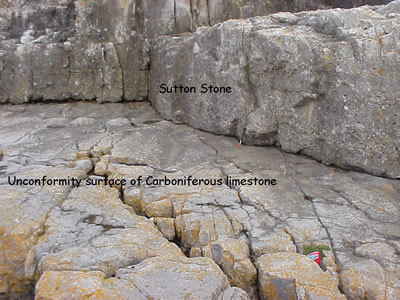
- the "smoking gun" way
Many people think of science as though one basic approach is right for every researcher, whatever the discipline. This, however, does not reflect reality and philosophers of science regularly write about the differences. A useful study by Cleland (2001) is of specific relevance to geological science.
Cleland argues that the historical sciences (those concerned with past events) are different from the empirical sciences (such as physics, chemistry and biology) for several reasons. These include the degree of control exercised by the researcher and the extent to which findings can be repeated. Historical science investigates causes of past events, for which we have only fragmentary data and where the observations are made much later than the actual events. Empirical science investigates causes of directly observed phenomena, with very short time spans between cause and effect.
These contrasts lead, according to Cleland, to some significant methodological differences in the ways scientists work. Empirical science looks at specific hypotheses, particular predictions arising from a specific hypothesis, and searches for data that confirms or refutes the hypothesis. However. historical science needs to work with multiple hypotheses, all of which appear, initially, to offer an explanation of the data. This situation is necessary because of the limitations of the database (often critical data is missing and the events are non-repeatable). The researcher then seeks out critical data that enables one or more of the competing hypotheses to be falsified. Cleland calls this "searching for a smoking gun that can unambiguously discriminate among competing explanations". Failure to do this may lead to "just-so stories" that sound impressive but have very little substance to them.
The practical implications of this approach is to encourage researchers to propose alternative hypotheses that appear to satisfy the data. Multiple hypotheses should not be regarded as a sign of confusion. Rather, they are an indication of healthy science. The dangers of not using this methodology is well-illustrated by one of the responses to Cleland's paper (Bailey, 2002).
Bailey points out that routine stratigraphical analysis uses a different methodology. Chains of causation are ignored and the analysis proceeds by making comparisons between ancient and modern sediment sequences. An ancient sandstone, for example, may be identified as a desert sandstone because it has the general characteristics of modern desert deposits. "By employing the simple stratigraphic "laws", with due allowance for the many gaps in this record, the stratigrapher can build a picture of changing environments and basin filling episodes through time. If this is the derided just-so story, then so be it".
Cleland then pointed out that the problem of limited data must not be lightly dismissed. If researchers apply their minds to the challenge, competing hypotheses can be found. "Because scientists are so free to fill in the large gaps in their current knowledge with different assumptions about background conditions and physical processes, it is often fairly easy for them to invent plausible alternative explanations." The tendency of stratigraphers to build up a story by analogy with modern-day sedimentation can lead easily to other equally valid explanations being overlooked.
A good example of the problem is provided by Ager (1993). He discusses a locality is in the Lower Jurassic near Swansea, which overlies Carboniferous Limestone. The limestone is overlain by various sedimentary deposits. One of these is called the "Sutton Stone". Ager writes: "This has usually been interpreted as the basal conglomerate of a diachronous transgressive sea. It has been suggested, with very little fossil evidence, that this conglomerate spans three to five ammonite zones and therefore up to five million years in time. I think it was deposited in a matter of hours or minutes" (page 120). He goes on to explain his reasons for this reinterpretation, although these need not concern us here. The point that I am illustrating is that multiple hypotheses are not only possible, they are urgently needed if geologists are to avoid shoe-horning data to fit a favoured interpretation.
 |
A view of the Sutton Stone near Ogmore-by-Sea, South Wales. The unconformity surface of the Carboniferous Limestone is overlain by the Sutton Stone (an extensive coarse conglomeratic unit over 1 metre thick), which in turn is overlain by much finer conglomeratic strata. The horizons within the Sutton Stone are solution features called stylolites, not bedding planes. |
Diluvialists look upon these exchanges with great interest. Much has been written about uniformitarianism and the doctrinaire way the interpretation of ancient sediments is driven by the presumption that the present is the key to the past. The consequence has been a plethora of "just-so stories". Ager's plea for a fresh look at stratigraphical interpretations has largely fallen on deaf ears. With Cleland's methodology, we have another chance to make a positive contribution. Diluvialists can actually stimulate the generation of alternative hypotheses and thus be of service to geological science.
David J. Tyler
This short article first appeared in Origins 35, July 2003, page 12.
References
Ager, D. 1993, The new catastrophism, Cambridge University Press, Cambridge.
Bailey, R.J. and Cleland, C.E. 2002, Comment and reply. Geology, 30(10), 952-954.
Cleland, C.E. 2001, Historical science, experimental science and the scientific method, Geology, 29(11), 987-990.

